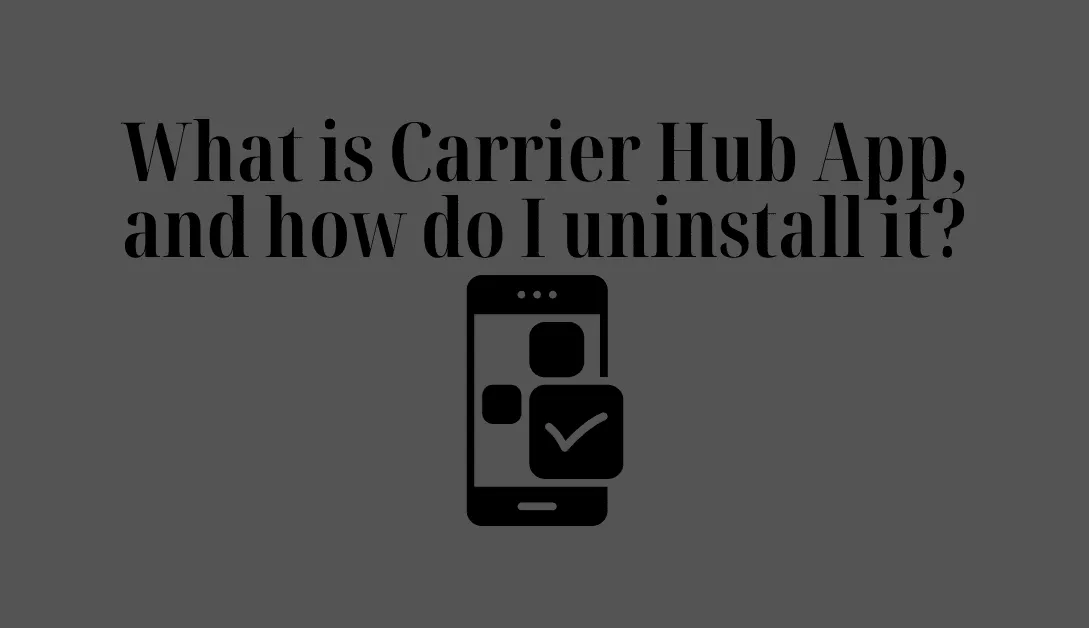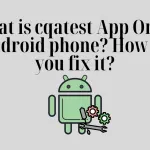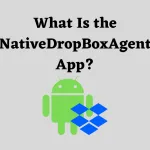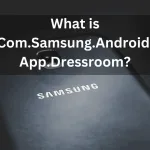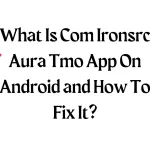An Android phone’s pre-installed carrier hub app makes it possible for smartphones using the Sprint T-Mobile Services network to use Sprint features. Additionally, it permits using specific features on the T-Mobile and Sprint networks, like voice-over-Wi-Fi.
According to their Google Play Store description, the carrier hub can also help Sprint and T-Mobile network users with customer service issues. Two default carrier apps are available in the Play Store;
T-Mobile USA created Magenta, while Sprint created Carrier Hub. Due to the April 2020 merger of Sprint and T-Mobile, these apps offer the same features.
The carrier hub app is typically pre-installed on most Android phones, but if you don’t have it, you might see notifications asking you to do so for a better user experience.
The app could then be downloaded and installed by following the notification prompts on the screen; however, occasionally, the app fails to download, resulting in ongoing notifications.
Customers will need a carrier hub app to be able to use their Sprint products and network together with the benefits that come with these services.
What Is Carrier Hub App on Android Phones?
To keep your family and home organized, iOS phones have a family organizer app, while Android phones have a carrier hub. One can manage their busy life by sharing calendars, tasks, lists, and notes through the carrier hub.
When you use an app, the carrier hub services occasionally display notifications on your device’s screen. There are two main causes for these notifications:
Your T-Mobile network and the Sprint application are incompatible, or there is a compatibility issue between the new Android version and your phone’s carrier hub.
As mentioned earlier in this article, a carrier hub is an Android system app that provides various crucial services, including voice-over Wi-Fi.
It functions well on devices compatible with your T-Mobile network, so if using it on your phone doesn’t cause any problems, leave it there. It shouldn’t harm you and won’t be an OMACP app or virus.
What Access Rights Does the Carrier Default App Have?
The carrier hub has access to development tools that allow it to read sensitive log data, modify secure system settings, and access protected storage. It has access to locations because it uses the internet to provide precise GPS locations.
The network communication permission granted to this app allows it to view various network connections, including Bluetooth and Wi-Fi devices.
Carrierhub has access to storage, enabling you to edit or remove data. The hub has access to calls and the ability to change phone states.
SEE: “The Number You Have Dialed Is Unallocated” How to Fix it?
What are the problems raised against the app?
Users have complained about the carrier hub app’s poor performance on Android phones, including instances where it doesn’t respond or takes a long time to process requests.
The app also brings on the following problems:
1.Battery draining Since
installing or updating the carrier hub app, many users have complained bitterly about how quickly their device’s battery is draining.
Since there is currently insufficient information on how the carrier hub affects mobile device batteries, it is important to take these complaints seriously to determine whether there is a connection between the battery and the app.
2: Quicker data exhaustion
Another complaint made against the carrier hub is excessive data usage. This app uses a lot more data than most other apps on your phone because it runs in the background of your device.
3.Poor performance
Some users have complained that their devices became sluggish and slow after installing or updating the carrier hub app.
SEE ALSO: What Is MDE Service Framework?
Why Is Carrier Hub not responding on my Android phone?
The carrier hub app rarely crashes, but when it does, the constant notifications can be inconvenient and frustrating.
Your mobile data or Wi-Fi connection issue may be one of the causes of the Mobile Services Manager app’s unresponsiveness.
It would help if you tried again later because the carrier hub app server might be down and causing loading issues or because too many people are using the app at once.
Clearing the Android cache may also help the carrier hub app behave more responsively.
- Go toSettings on your phone.
- Then click onapps.
- Select carrier hub
- Click Storage
- Tap on “clear cache”or “clear all data.”
How to Disable the Carrier Hub?
Although the carrier hub app is vital to your device, some people prefer to disable it. The steps to disable the carrier default app are listed below.
- Go to theSettingsapp on your phone.
- Chooseappsandnotifications.
- Now tap on the ellipsis in thetop right corner.
- Scroll toSystem Appsand select it.
- Please search for theCarrier Hub appand choose it.
- Click on the “Disable” button.
How to Uninstall Carrier Hub on Android Phones
A carrier hub is pre-installed on most phones, so it cannot normally remove like other apps.
To have administrative rights, however, you can root your device or use ADB (Android Debug Bridge) to uninstall the carrier hub app from the phone. This technique will also remove or uninstall any other Android applications, including mdmapp.What is Com.samsung.sdm.sdmviewer?
1: ADB Method (Android Debug Bridge)
ADB (Android Debug Bridge) gives complete Unix shell access to execute various commands on a specific Android device. The carrier hub services app can occasionally be permanently deleted by following the instructions below.
- From your phone’s app drawer, select the Settings app, select Systems, and then scroll down to About phone.
- Tap thebuild number seven times, and the developer option will activate for you.
- Click on the “Developer” option in the mainSettingsmenu.
- Once it’s on, enable USB debugging and install ADB on your computer.
- A zip file now shows up; extract that file into a folder.
- Open the folder after the process is complete.
- Press (long press)the shift key, right-click on the blank area and then click on the Open PowerShell window.
- Give the “ADBdevice” command.
- Using a USB cable toconnectyour Android phone to your PC
- Run the command that shows up to remove the app.
2.Using System App Remover
If your device is not already rooted, you must do so before you can use the system app remover to remove the carrier hub.
- You need todownloadthe system app remover.
- Launchthe app, search for the carrier hub, and confirm the box next to it.
- Click on theUninstallbutton to remove the app completely.
How can I stop my data from being tracked by the carrier services app?
- Follow the instructions below if you want to restrict the app’s access to your data.
- Go toSettingson your Android device
- Search, and usagedata accesson the search bar.
- If it is on, turn it off using the button.
What Does MCM Client Requests Processing Mean?
People using carrier hub apps frequently see notifications about MCM clients (mobile content management) processing requests.
Your phone frequently displays this notification after restarting as it attempts to connect to nearby cell towers.
The notification will vanish once you are connected, so you might still see the notification if you are in an area with poor service.
You will also be notified if T-Mobile is down for maintenance, and until T-Mobile is back online, your device won’t be able to send texts, make calls, or use data services.
Conclusion
Most phones come with the pre-installed carrier hub app from the manufacturer. The app offers a variety of helpful features, including Wi-Fi calling when used in conjunction with the T-Mobile network. It is not a virus or spyware, and it makes use of the Sprint network.
We advise leaving the carrier default app on an Android phone if it is manageable. Still, if you believe it harms your phone, you can disable it or uninstall it by following the instructions above.
READ ALSO:
- What is OMACP on an Android Phone
- What Is Com Dti Folderlauncher App?
- What Is com.android.localtransport App And How To Disable It?
- What Is CarmodeStub App?
